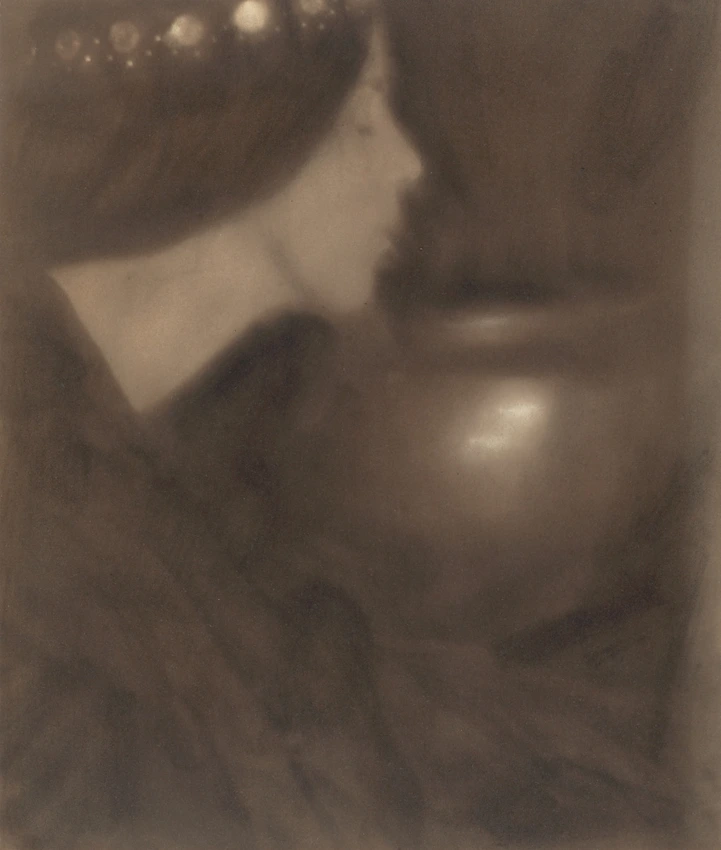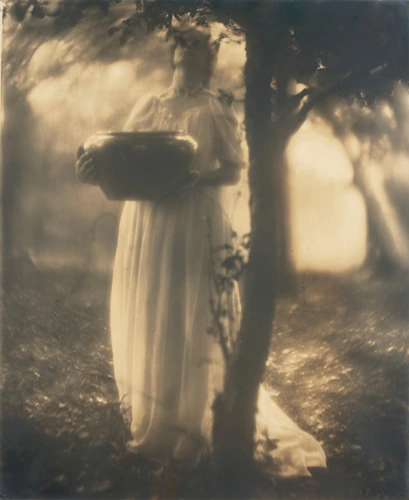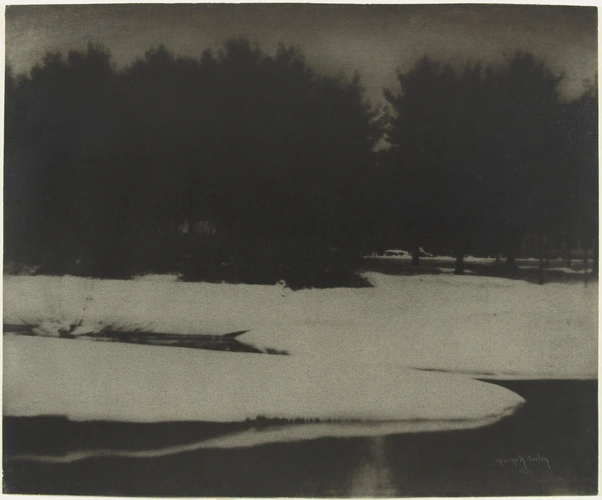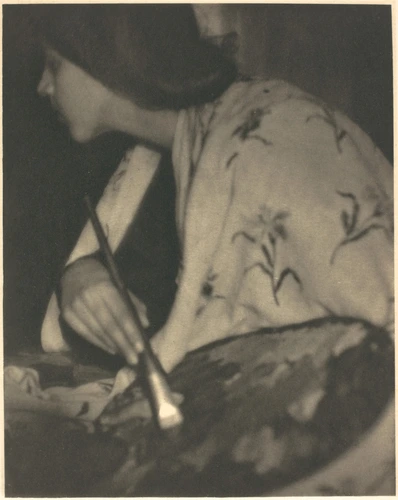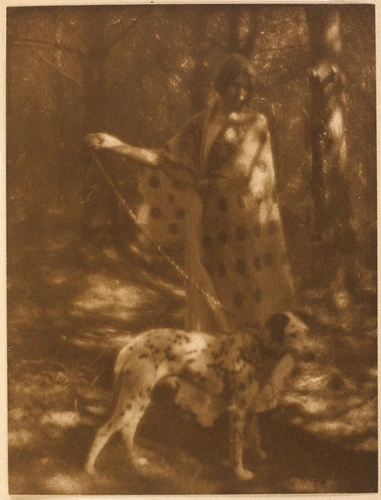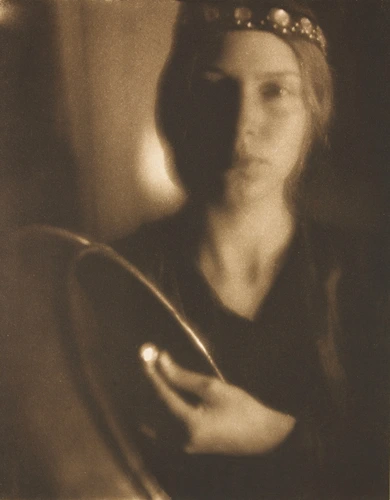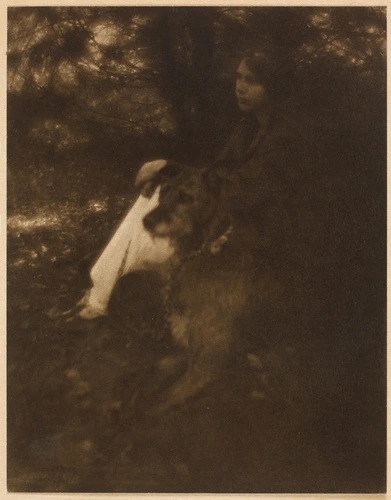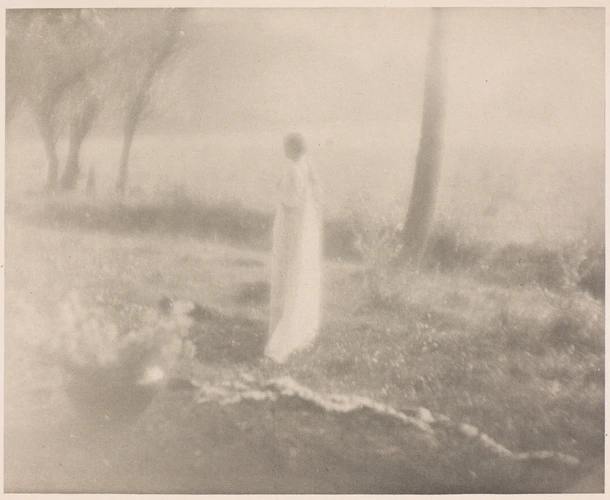The Brass Bowl
George Seeley, a member of the American "Photo Secession" group created by Alfred Stieglitz in 1903, features among the great names in early 20th century pictorialist photography. The Brass Bowl, certainly his best-known image, could also be seen as a manifesto of this movement that brought together photographers who, in their desire to emphasise the aesthetic, resembled painter-engravers. This comparison is equally true of both their inspiration and their technique. For example, they scorned the minute transcription of reality, so characteristic of scientific and commercial photography, in favour of complex printing processes that required manual skill and that brought a unique character to the print.
Here, two layers of an organic photosensitive substance are brushed on to the photograph, a process that accentuates the hazy and mysterious effect created by the blurred focus. The real subject of the work is the reflection of the brass vase in the half-light and the ecstatic expression of this woman's profile, creating an atmosphere that was favoured by the leading Symbolists around 1900.
The composition, a face in close up with an everyday utensil, certainly recalls not only the art of Julia Margaret Cameron (1815-1879), one of the pioneers of Pictorialism, but also that of the many prints by the Japanese artist Utamaro (1753-1806), and thus demonstrates that, whatever the origins of some of the American Pictorialists, and in particular Seeley who was a native of Stockbridge (Massachusetts), they were all well informed about international artistic movements.
